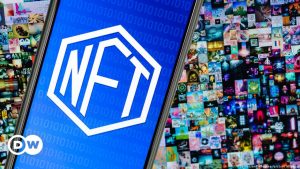NFT collections rely on smart contracts to assign ownership and establish rules for transfers and resales, making these contracts an integral part of its infrastructure, which directly influences how much you can charge for pieces in your collection.
What is an NFT (Non-Fungible Token)?
An NFT (Non-Fungible Token) is a digital representation of real world tangible assets. As unique and irreplaceable pieces, NFTs can be transferred using blockchain technology and used as a transfer medium. NFTs may represent anything from artwork, physical real estate and lending contracts allowing these assets to be traded, sold and collected with ease.

Non-fungible tokens have revolutionized the art world, enabling artists to monetize their creations for millions of dollars through online NFT platforms. But it’s important to note that just because something is classified as a NFT doesn’t mean you “own” it; this distinction has created much debate as to whether NFTs actually constitute ownership of original content, or just rights of use.
An NFT can be defined as a digital file with its own ID and metadata that allows for managing asset transferability. Furthermore, its existence on Ethereum’s blockchain ensures it cannot lose value or authenticity over time.
Thus, NFTs have quickly become an attractive proposition to collectors and traders alike. Their value can fluctuate based on market forces; additionally, NFTs enable content creators to sell or trade the original version of popular pieces that continue to generate revenue year-after-year – an exciting development that should only increase with more developers creating NFTs specifically created for sale and trading.
But how can creators get started? Next, we’ll take a look at how to launch an NFT collection, step by step. You might find that the process is actually easier than you think!
Choose a theme

As part of starting an NFT collection, it is essential to select a theme that will draw customers in while setting yourself apart from competitors.
Also make sure your NFTs are high-quality and visually appealing before marketing them effectively by working with influencers, creating social media posts or attending industry events.
Once you’ve selected a theme for your NFT collection, it is crucial to establish brand guidelines and a brand identity. You can visit this site for more information on building brand identity. This will help to ensure all content adheres to the collection’s brand and messaging as well as establish clear expectations among buyers while creating brand loyalty within your audience.
NFTs provide an exciting new way to create and sell virtual items. When executed properly, an NFT collection can generate significant revenues and be an asset collectors can rely on – but to achieve success it is vitally important that you take time planning and executing it strategically – using these tips you can launch your collection with pride!
Create your NFTs
Creating non-fungible tokens (NFTs) is relatively straightforward; no special skills or software development knowledge is needed. But keep in mind that their value will depend on their design and quality – so before minting NFTs it’s essential to dedicate sufficient time and energy into creating high-quality artwork which appeals to potential buyers.
Be mindful that building an NFT collection takes time and dedication, which may mean new artists encountering difficulty selling their works at first. Be patient as you continue working at it – supporting other NFT artists can be helpful as you navigate this market.
The NFT market is growing quickly, offering creatives plenty of opportunities to capitalize on it. However, it’s important to remember that NFTs are an emerging technology; not every artist may be able to produce an outstanding NFT collection.
List your NFTs on a marketplace
If you want to make money off of your NFT collection, listing it on a marketplace is crucial. Doing this allows buyers to buy it while also giving your project more exposure.
When listing an NFT, be sure to write an engaging product description which highlights all its unique features; for instance if selling a digital painting be sure to describe its motivations and mood as well as any factors which set it apart from competitors. You can click the link: https://www.wikihow.com/Write-a-Product-Description for tips on writing your own product descriptions.
Make sure that any additional benefits associated with your NFTs are clearly articulated, such as access to exclusive events or unique gifts – or even royalties for each unit sold.
One effective strategy to increase NFT value is through endorsement. One strategy to accomplish this goal is by seeking endorsement from notable figures, especially public or personal endorsement.
Once your NFTs have been issued, they are ready for sale. To increase sales of these financial instruments, make sure that you promote them across social media and other platforms.
Sell your NFTs
NFTs can be sold through various marketplaces, including OpenSea, Rarible Foundation and Nifty Gateway. To sell an NFT successfully, the seller must first “mint” it as an NFT – this involves turning their digital creation into a token on Ethereum blockchain network and listing it for sale with attractive pricing and descriptions to attract buyers. When they have successfully sold one NFT they receive a small percentage of transaction value as payment from these marketplaces.
When setting an initial price for NFTs, creators must consider both how much money they would like to earn and how long they plan on selling them for. Furthermore, fees such as marketplace listing fees will likely apply; depending on which marketplace it’s being sold through, these may either be negotiable or nonexistent altogether.
Once your NFTs are listed on a marketplace, it is crucial that they are managed effectively in order to maximize revenue. This can be accomplished using SEO techniques such as search engine optimization (SEO), email marketing and social media promotions in addition to monitoring performance and making necessary adjustments as required.
NFTs can provide engaging, unique digital experiences for others to share. But understanding the market before starting is critical if creators hope their NFTs will be well received and successful sellers.
Following this article’s tips can ensure their NFTs will be well received and can sell effectively while creating engaging experiences that build a loyal following that support them over time; growing audience and increasing value over time!

